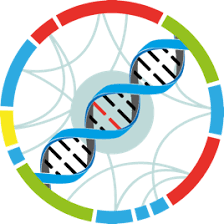Study : Zea mays
Identification
Name
Zea mays
Identifier
dXJuOkVWQS9zdHVkeS9QUkpOQTM1OTA5OA==
Description
Most Genotyping-by-Sequencing (GBS) strategies suffer from high rates of missing data and high error rates, particularly at heterozygous sites. Tunable genotyping-by-sequencing (tGBS®), a novel genome reduction method, consists of the ligation of single-strand oligos to restriction enzyme fragments. DNA barcodes are added during PCR amplification; additional (selective) nucleotides included at the 3’-end of the PCR primers result in more genome reduction as compared to conventional GBS methods. By adjusting the number of selective bases different numbers of genomic sites can be targeted for sequencing. Because this genome reduction strategy concentrates sequencing reads on fewer sites, SNP calls are based on more reads than conventional GBS, resulting in higher SNP calling accuracy (>97-99%) even for heterozygous sites and less missing data per marker. tGBS genotyping is expected to be particularly useful for genomic selection, which requires the ability to genotype populations of individuals that are heterozygous at many loci.
Genotype
| Accession number | Name | Taxon |
|---|
